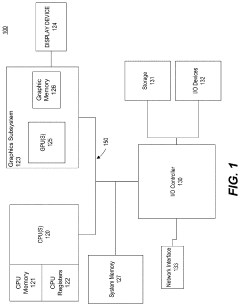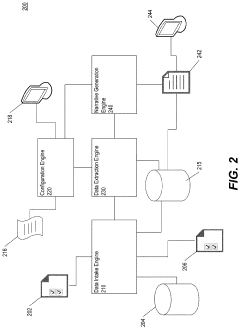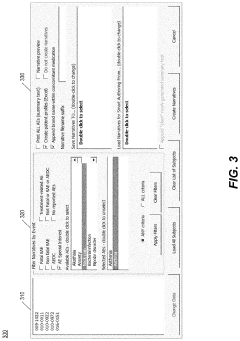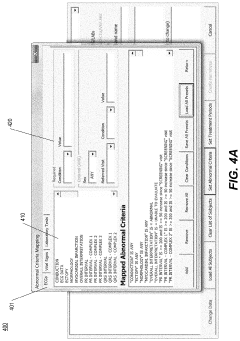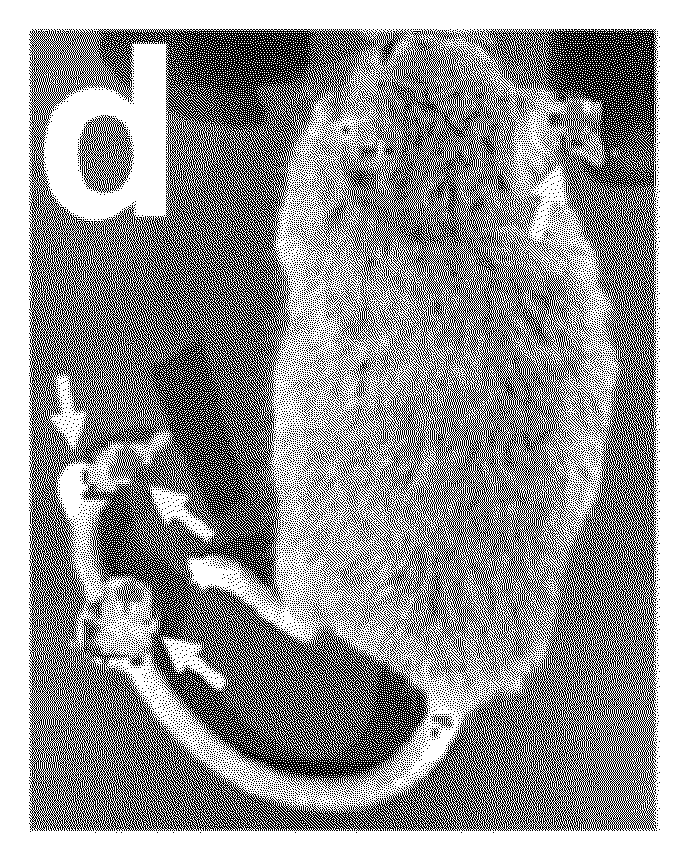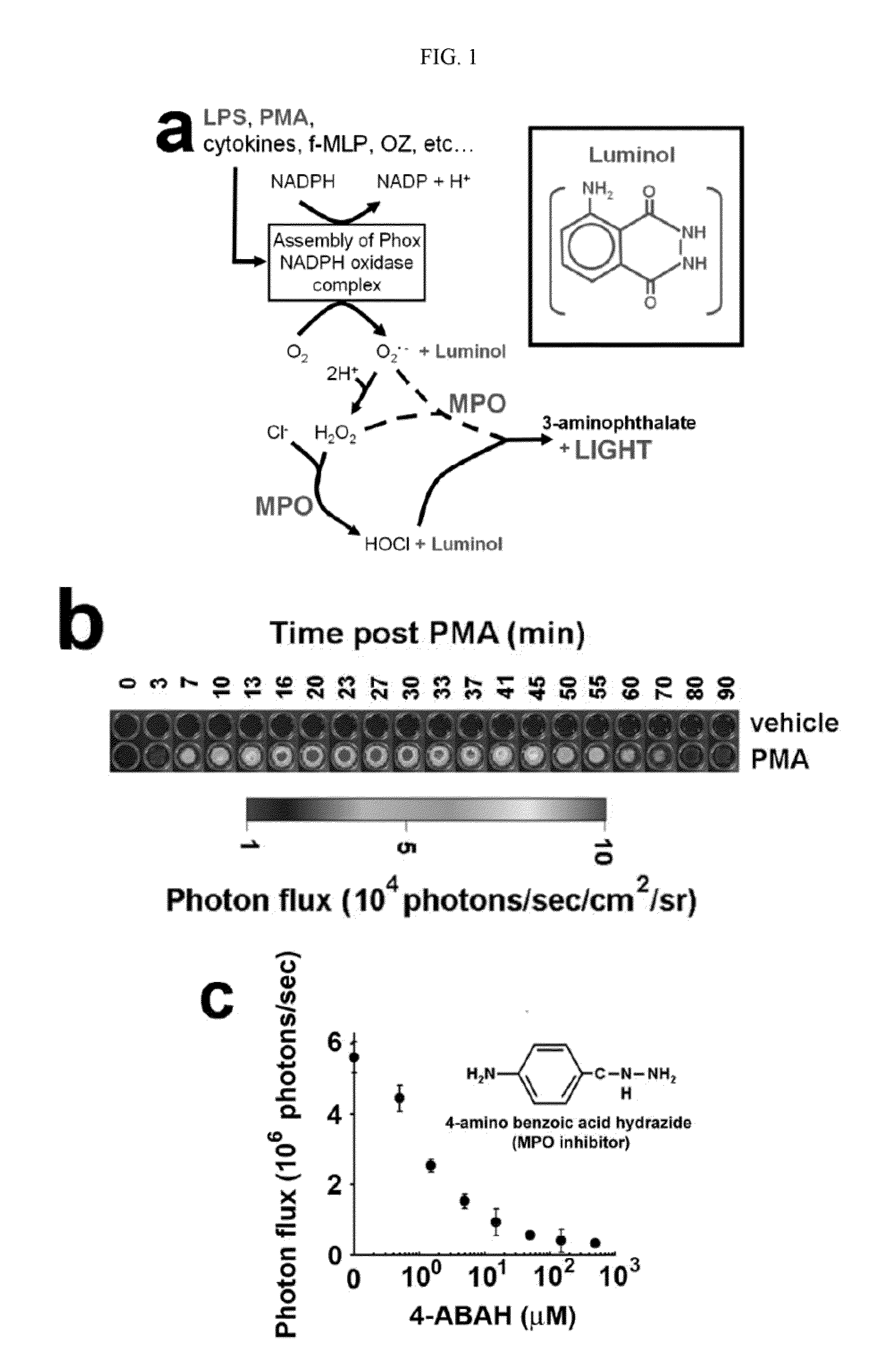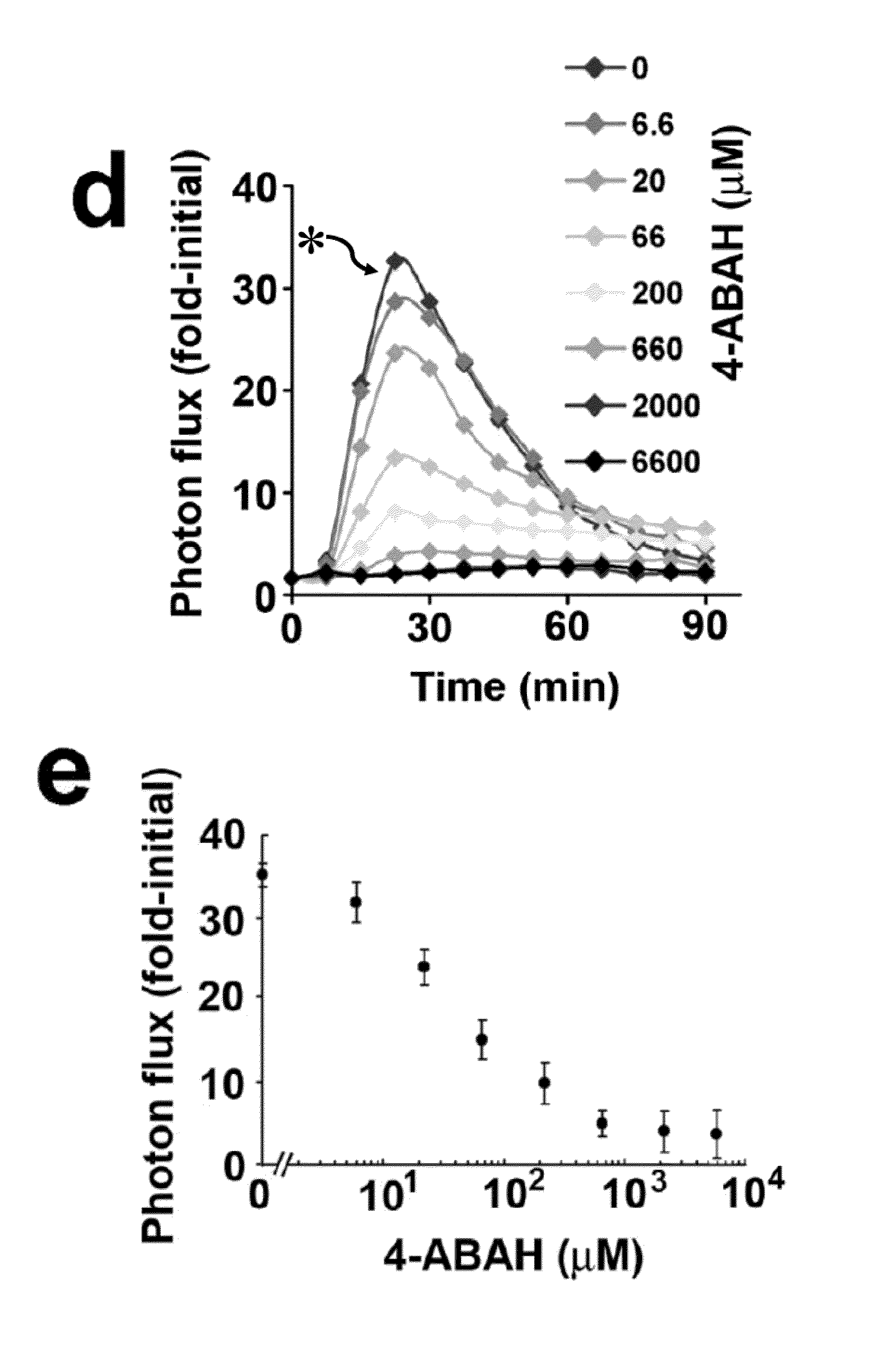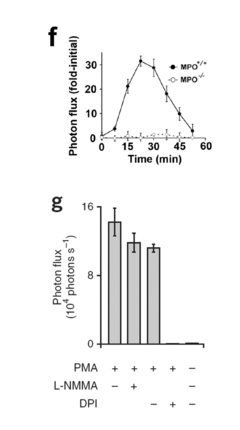How Luminol Sets Scientific Research Frameworks?
AUG 19, 20259 MIN READ
Generate Your Research Report Instantly with AI Agent
Patsnap Eureka helps you evaluate technical feasibility & market potential.
Luminol Research Background and Objectives
Luminol, a chemiluminescent compound, has been a cornerstone in scientific research frameworks for decades. Its unique ability to emit light through chemical reactions has revolutionized various fields, particularly forensic science and biochemistry. The development of luminol-based techniques has a rich history dating back to the early 20th century, with significant advancements occurring in recent years.
The evolution of luminol in scientific research frameworks has been driven by the need for more sensitive and specific detection methods. Initially used primarily in crime scene investigations for blood detection, luminol's applications have expanded to include environmental monitoring, medical diagnostics, and molecular biology. This expansion has been facilitated by ongoing research into the chemical properties of luminol and its derivatives, as well as improvements in detection technologies.
One of the key trends in luminol research has been the development of enhanced formulations to increase sensitivity and reduce interference from other substances. Scientists have explored various catalysts and additives to optimize the luminol reaction, resulting in more reliable and accurate detection methods. Additionally, there has been a focus on creating luminol-based systems that are more stable and easier to use in field conditions, addressing the practical challenges of real-world applications.
The integration of luminol into advanced analytical techniques has further expanded its role in scientific research frameworks. For instance, the combination of luminol chemiluminescence with high-performance liquid chromatography (HPLC) has enabled the detection of trace amounts of various compounds in complex matrices. This has opened up new possibilities in environmental analysis, food safety testing, and pharmaceutical research.
Looking ahead, the objectives for luminol research in scientific frameworks are multifaceted. There is a continued push for even greater sensitivity and specificity, with the goal of developing luminol-based assays capable of detecting single molecules. Researchers are also exploring the potential of luminol in emerging fields such as nanotechnology and biosensors, aiming to create novel diagnostic tools and analytical platforms.
Another important objective is the development of more sustainable and environmentally friendly luminol-based techniques. This includes research into green chemistry approaches for luminol synthesis and the creation of biodegradable luminol formulations. Such advancements would address growing concerns about the environmental impact of chemical reagents used in scientific research.
In conclusion, the background and objectives of luminol research in scientific frameworks reflect a dynamic and evolving field. From its origins in forensic science to its current status as a versatile tool in multiple disciplines, luminol continues to play a crucial role in advancing scientific knowledge and methodologies. The ongoing pursuit of improved sensitivity, specificity, and sustainability ensures that luminol will remain at the forefront of scientific research frameworks for years to come.
The evolution of luminol in scientific research frameworks has been driven by the need for more sensitive and specific detection methods. Initially used primarily in crime scene investigations for blood detection, luminol's applications have expanded to include environmental monitoring, medical diagnostics, and molecular biology. This expansion has been facilitated by ongoing research into the chemical properties of luminol and its derivatives, as well as improvements in detection technologies.
One of the key trends in luminol research has been the development of enhanced formulations to increase sensitivity and reduce interference from other substances. Scientists have explored various catalysts and additives to optimize the luminol reaction, resulting in more reliable and accurate detection methods. Additionally, there has been a focus on creating luminol-based systems that are more stable and easier to use in field conditions, addressing the practical challenges of real-world applications.
The integration of luminol into advanced analytical techniques has further expanded its role in scientific research frameworks. For instance, the combination of luminol chemiluminescence with high-performance liquid chromatography (HPLC) has enabled the detection of trace amounts of various compounds in complex matrices. This has opened up new possibilities in environmental analysis, food safety testing, and pharmaceutical research.
Looking ahead, the objectives for luminol research in scientific frameworks are multifaceted. There is a continued push for even greater sensitivity and specificity, with the goal of developing luminol-based assays capable of detecting single molecules. Researchers are also exploring the potential of luminol in emerging fields such as nanotechnology and biosensors, aiming to create novel diagnostic tools and analytical platforms.
Another important objective is the development of more sustainable and environmentally friendly luminol-based techniques. This includes research into green chemistry approaches for luminol synthesis and the creation of biodegradable luminol formulations. Such advancements would address growing concerns about the environmental impact of chemical reagents used in scientific research.
In conclusion, the background and objectives of luminol research in scientific frameworks reflect a dynamic and evolving field. From its origins in forensic science to its current status as a versatile tool in multiple disciplines, luminol continues to play a crucial role in advancing scientific knowledge and methodologies. The ongoing pursuit of improved sensitivity, specificity, and sustainability ensures that luminol will remain at the forefront of scientific research frameworks for years to come.
Market Analysis for Luminol Applications
The market for luminol applications has shown significant growth and diversification in recent years, driven by advancements in forensic science, medical research, and industrial processes. Luminol, a chemical compound known for its chemiluminescent properties, has found widespread use in crime scene investigation and blood detection, which remains its primary market. The global forensic technology market, where luminol plays a crucial role, is expected to continue its upward trajectory due to increasing crime rates and the need for more sophisticated investigative techniques.
In the forensic sector, luminol's ability to detect trace amounts of blood, even after cleaning attempts, has made it an indispensable tool for law enforcement agencies worldwide. This application has led to a steady demand from police departments, forensic laboratories, and private investigation firms. The market for luminol in this sector is characterized by consistent growth, with new formulations and application methods continually being developed to enhance its effectiveness and ease of use.
Beyond forensics, luminol has found emerging applications in the medical research field. Its chemiluminescent properties are being utilized in various biochemical assays and diagnostic tests. This expansion into the healthcare sector represents a significant opportunity for market growth, as the demand for sensitive and reliable diagnostic tools continues to rise. The use of luminol in detecting certain enzymes and proteins has opened new avenues for research in areas such as cancer detection and immunology.
In the industrial sector, luminol is gaining traction in environmental monitoring and quality control processes. Its ability to detect minute traces of certain metals and oxidizing agents has made it valuable in water quality testing and industrial cleanliness verification. This diversification of applications is contributing to the overall expansion of the luminol market.
The market dynamics for luminol are influenced by factors such as technological advancements in detection methods, increasing awareness of forensic techniques, and growing investments in research and development. Manufacturers are focusing on developing more stable and sensitive luminol formulations to meet the evolving needs of various industries. Additionally, the integration of luminol-based techniques with other analytical methods is creating new market opportunities.
Geographically, North America and Europe remain the largest markets for luminol applications, primarily due to their advanced forensic infrastructure and higher adoption rates of innovative technologies. However, emerging economies in Asia-Pacific and Latin America are showing rapid growth potential, driven by increasing investments in law enforcement technologies and rising awareness of forensic science applications.
In the forensic sector, luminol's ability to detect trace amounts of blood, even after cleaning attempts, has made it an indispensable tool for law enforcement agencies worldwide. This application has led to a steady demand from police departments, forensic laboratories, and private investigation firms. The market for luminol in this sector is characterized by consistent growth, with new formulations and application methods continually being developed to enhance its effectiveness and ease of use.
Beyond forensics, luminol has found emerging applications in the medical research field. Its chemiluminescent properties are being utilized in various biochemical assays and diagnostic tests. This expansion into the healthcare sector represents a significant opportunity for market growth, as the demand for sensitive and reliable diagnostic tools continues to rise. The use of luminol in detecting certain enzymes and proteins has opened new avenues for research in areas such as cancer detection and immunology.
In the industrial sector, luminol is gaining traction in environmental monitoring and quality control processes. Its ability to detect minute traces of certain metals and oxidizing agents has made it valuable in water quality testing and industrial cleanliness verification. This diversification of applications is contributing to the overall expansion of the luminol market.
The market dynamics for luminol are influenced by factors such as technological advancements in detection methods, increasing awareness of forensic techniques, and growing investments in research and development. Manufacturers are focusing on developing more stable and sensitive luminol formulations to meet the evolving needs of various industries. Additionally, the integration of luminol-based techniques with other analytical methods is creating new market opportunities.
Geographically, North America and Europe remain the largest markets for luminol applications, primarily due to their advanced forensic infrastructure and higher adoption rates of innovative technologies. However, emerging economies in Asia-Pacific and Latin America are showing rapid growth potential, driven by increasing investments in law enforcement technologies and rising awareness of forensic science applications.
Current Challenges in Luminol-based Research
Despite the widespread use of luminol in forensic science and biomedical research, several challenges persist in luminol-based research frameworks. One of the primary issues is the lack of standardization in luminol formulations and application protocols. Different research groups often use varying concentrations and compositions of luminol solutions, making it difficult to compare results across studies and replicate findings accurately.
The sensitivity and specificity of luminol reactions also present ongoing challenges. While luminol is known for its high sensitivity in detecting trace amounts of blood, it can produce false-positive results when reacting with other substances such as certain plant materials, cleaning agents, or metals. This limitation necessitates the development of more selective detection methods and improved data interpretation techniques to minimize false positives in forensic investigations and scientific research.
Another significant challenge is the transient nature of the luminol chemiluminescence reaction. The light emission from the reaction is relatively short-lived, which can make it challenging to capture and analyze the signal, especially in field conditions or when dealing with complex biological samples. Researchers are continually working on enhancing the stability and duration of the luminol reaction to improve its practical applicability in various scientific disciplines.
The quantitative analysis of luminol-based assays remains a hurdle in many research settings. While luminol can provide qualitative information about the presence of certain substances, accurately quantifying the amount of target analyte based on luminescence intensity is often complicated by factors such as sample matrix effects, environmental conditions, and variations in reaction kinetics. This limitation hinders the use of luminol in precise quantitative studies and diagnostic applications.
Furthermore, the integration of luminol-based detection systems with modern analytical technologies poses technical challenges. Researchers are exploring ways to combine luminol chemiluminescence with advanced imaging techniques, microfluidic devices, and high-throughput screening platforms. However, issues related to signal interference, miniaturization, and automation of luminol-based assays need to be addressed to fully leverage the potential of this versatile chemical in cutting-edge scientific research frameworks.
Lastly, the environmental and health impacts of luminol and its reaction products are areas of growing concern. As luminol finds increasing applications in various fields, there is a need for comprehensive studies on its long-term effects on ecosystems and human health. Developing eco-friendly alternatives or modified luminol formulations that maintain high sensitivity while reducing potential environmental risks is an important challenge facing researchers in this field.
The sensitivity and specificity of luminol reactions also present ongoing challenges. While luminol is known for its high sensitivity in detecting trace amounts of blood, it can produce false-positive results when reacting with other substances such as certain plant materials, cleaning agents, or metals. This limitation necessitates the development of more selective detection methods and improved data interpretation techniques to minimize false positives in forensic investigations and scientific research.
Another significant challenge is the transient nature of the luminol chemiluminescence reaction. The light emission from the reaction is relatively short-lived, which can make it challenging to capture and analyze the signal, especially in field conditions or when dealing with complex biological samples. Researchers are continually working on enhancing the stability and duration of the luminol reaction to improve its practical applicability in various scientific disciplines.
The quantitative analysis of luminol-based assays remains a hurdle in many research settings. While luminol can provide qualitative information about the presence of certain substances, accurately quantifying the amount of target analyte based on luminescence intensity is often complicated by factors such as sample matrix effects, environmental conditions, and variations in reaction kinetics. This limitation hinders the use of luminol in precise quantitative studies and diagnostic applications.
Furthermore, the integration of luminol-based detection systems with modern analytical technologies poses technical challenges. Researchers are exploring ways to combine luminol chemiluminescence with advanced imaging techniques, microfluidic devices, and high-throughput screening platforms. However, issues related to signal interference, miniaturization, and automation of luminol-based assays need to be addressed to fully leverage the potential of this versatile chemical in cutting-edge scientific research frameworks.
Lastly, the environmental and health impacts of luminol and its reaction products are areas of growing concern. As luminol finds increasing applications in various fields, there is a need for comprehensive studies on its long-term effects on ecosystems and human health. Developing eco-friendly alternatives or modified luminol formulations that maintain high sensitivity while reducing potential environmental risks is an important challenge facing researchers in this field.
Existing Luminol Research Methodologies
01 Luminol in forensic applications
Luminol is widely used in forensic science for detecting trace amounts of blood at crime scenes. When mixed with an oxidizing agent, it produces a blue chemiluminescence in the presence of hemoglobin, allowing investigators to identify blood stains that are not visible to the naked eye.- Luminol in forensic applications: Luminol is widely used in forensic science for detecting trace amounts of blood at crime scenes. When luminol comes into contact with the iron in hemoglobin, it produces a bright blue chemiluminescence. This reaction can reveal blood traces that are invisible to the naked eye, even if the area has been cleaned.
- Luminol-based detection systems: Various detection systems incorporate luminol for its chemiluminescent properties. These systems are used in environmental monitoring, food safety testing, and medical diagnostics. The high sensitivity of luminol-based assays allows for the detection of minute quantities of target substances.
- Luminol synthesis and formulation: Improved methods for synthesizing and formulating luminol have been developed to enhance its performance and stability. These advancements include novel synthetic routes, purification techniques, and the incorporation of additives to prolong shelf life and increase light output.
- Luminol in biomedical research: Luminol is utilized in various biomedical research applications, including the study of cellular processes, oxidative stress, and inflammation. Its ability to produce light in the presence of certain enzymes and reactive oxygen species makes it valuable for investigating biological mechanisms and developing new diagnostic tools.
- Luminol-based imaging techniques: Advanced imaging techniques using luminol have been developed for applications in medicine, materials science, and environmental monitoring. These methods exploit the chemiluminescent properties of luminol to visualize specific targets or processes with high sensitivity and spatial resolution.
02 Luminol-based detection systems
Various detection systems incorporate luminol for sensitive and specific detection of analytes. These systems often combine luminol with other reagents or enzymes to enhance sensitivity or target specific molecules. Applications include medical diagnostics, environmental monitoring, and food safety testing.Expand Specific Solutions03 Luminol derivatives and modifications
Researchers have developed modified versions of luminol to improve its properties or expand its applications. These derivatives may have enhanced stability, increased luminescence intensity, or altered specificity for certain analytes. Some modifications aim to optimize luminol for use in specific environments or detection methods.Expand Specific Solutions04 Luminol in biological imaging
Luminol and its derivatives are used in biological imaging techniques, particularly for visualizing cellular processes involving reactive oxygen species or peroxidase enzymes. These applications allow researchers to study oxidative stress, inflammation, and other biological phenomena in living systems.Expand Specific Solutions05 Luminol-based analytical methods
Various analytical methods utilize luminol's chemiluminescent properties for quantitative and qualitative analysis. These methods often involve flow injection analysis, high-performance liquid chromatography, or electrochemical techniques. They are applied in fields such as pharmaceutical analysis, environmental monitoring, and industrial quality control.Expand Specific Solutions
Key Players in Luminol Research and Development
The competitive landscape for luminol-based scientific research frameworks is evolving rapidly, reflecting the technology's growing importance in forensic science and biomedical research. The market is in an early growth stage, with increasing adoption driving expansion. While exact market size figures are limited, the involvement of major players like Promega Corp. and Applied Biosystems LLC indicates significant potential. Technologically, luminol applications are advancing, but still maturing. Companies like TCL China Star Optoelectronics and FUJIFILM Corp. are likely focusing on improving sensitivity and specificity of luminol-based detection methods. Academic institutions such as Washington University in St. Louis and Fudan University are contributing to fundamental research, potentially accelerating the field's development and applications.
Promega Corp.
Technical Solution: Promega has developed advanced luminol-based detection systems for scientific research. Their technology utilizes enhanced chemiluminescence reactions to improve sensitivity in various assays. They have created optimized formulations of luminol and its derivatives, coupled with proprietary stabilizers and enhancers, to produce brighter and longer-lasting signals[1]. This allows for more accurate quantification of analytes in biological samples. Promega's systems also incorporate automated liquid handling and imaging platforms to standardize workflows and increase reproducibility in research applications[2].
Strengths: High sensitivity, long signal duration, automated workflows. Weaknesses: May require specialized equipment, potentially higher cost compared to traditional methods.
Washington University in St. Louis
Technical Solution: Washington University has pioneered the use of luminol-based techniques in neuroscience research. They have developed a novel approach using luminol to visualize and quantify neuroinflammation in live animal models[3]. This method involves systemically administering luminol, which crosses the blood-brain barrier and reacts with myeloperoxidase released by activated immune cells in the brain. The resulting chemiluminescence can be detected through non-invasive imaging, allowing researchers to track inflammatory processes in real-time[4]. This technique has been applied to study various neurological disorders and evaluate potential therapeutic interventions.
Strengths: Non-invasive, real-time monitoring of brain inflammation, applicable to various neurological conditions. Weaknesses: Limited to studying processes involving myeloperoxidase activity, may require specialized imaging equipment.
Innovative Approaches in Luminol Studies
Systems and methods for generating and modifying documents describing scientific research
PatentActiveUS11475212B2
Innovation
- A data-driven document creation and modification system that automates the generation of narratives and reports using a computing device with data intake, configuration, extraction, and narrative generation engines, allowing for configuration of information types, updating existing narratives, and incorporating new data, enabling early narrative generation and highlighting changes.
Bioluminescence imaging of myeloperoxidase activity in vivo, methods, compositions and apparatuses therefor
PatentInactiveUS20110250145A1
Innovation
- The development of methods for non-invasive imaging of MPO activity using luminogenic-optical probes that emit light upon contact with oxidizing agents, allowing for the visualization of MPO activity in vivo, particularly through bioluminescence imaging (BLI) techniques.
Regulatory Considerations for Luminol Use
The use of luminol in scientific research, particularly in forensic investigations, is subject to various regulatory considerations that ensure its proper and ethical application. These regulations aim to maintain the integrity of evidence, protect the rights of individuals involved in investigations, and uphold the standards of scientific practice.
In many jurisdictions, the use of luminol falls under the broader category of forensic evidence collection and analysis. Regulatory bodies, such as the International Organization for Standardization (ISO) and the American Society of Crime Laboratory Directors (ASCLD), have established guidelines for the accreditation of forensic laboratories. These guidelines often include specific protocols for the handling, storage, and application of chemical reagents like luminol.
One of the primary regulatory concerns surrounding luminol use is the potential for contamination or degradation of other forms of evidence. As luminol can interfere with subsequent DNA analysis, strict protocols must be followed to ensure that its application does not compromise other crucial evidence at a crime scene. This often involves documenting the exact areas where luminol is applied and conducting other forensic tests before its use.
The chain of custody for luminol-treated evidence is another critical regulatory consideration. Detailed records must be maintained regarding the preparation, application, and storage of luminol solutions, as well as the handling of any evidence exposed to the chemical. This documentation is essential for maintaining the admissibility of evidence in court proceedings.
Environmental and safety regulations also play a significant role in the use of luminol. While the chemical is generally considered safe when used properly, it can pose risks if mishandled. Regulatory bodies such as the Occupational Safety and Health Administration (OSHA) in the United States provide guidelines for the safe handling and disposal of chemical reagents used in forensic investigations.
In academic and research settings, the use of luminol is often subject to institutional review board (IRB) approval, especially when human subjects or sensitive materials are involved. These boards ensure that research protocols adhere to ethical standards and regulatory requirements, including proper consent procedures and data protection measures.
As forensic science continues to evolve, regulatory frameworks for luminol use are also adapting. There is an increasing emphasis on standardization and validation of forensic techniques across different jurisdictions. International collaborations, such as those facilitated by INTERPOL, are working towards harmonizing forensic practices, including the use of luminol, to ensure consistency and reliability in cross-border investigations.
In many jurisdictions, the use of luminol falls under the broader category of forensic evidence collection and analysis. Regulatory bodies, such as the International Organization for Standardization (ISO) and the American Society of Crime Laboratory Directors (ASCLD), have established guidelines for the accreditation of forensic laboratories. These guidelines often include specific protocols for the handling, storage, and application of chemical reagents like luminol.
One of the primary regulatory concerns surrounding luminol use is the potential for contamination or degradation of other forms of evidence. As luminol can interfere with subsequent DNA analysis, strict protocols must be followed to ensure that its application does not compromise other crucial evidence at a crime scene. This often involves documenting the exact areas where luminol is applied and conducting other forensic tests before its use.
The chain of custody for luminol-treated evidence is another critical regulatory consideration. Detailed records must be maintained regarding the preparation, application, and storage of luminol solutions, as well as the handling of any evidence exposed to the chemical. This documentation is essential for maintaining the admissibility of evidence in court proceedings.
Environmental and safety regulations also play a significant role in the use of luminol. While the chemical is generally considered safe when used properly, it can pose risks if mishandled. Regulatory bodies such as the Occupational Safety and Health Administration (OSHA) in the United States provide guidelines for the safe handling and disposal of chemical reagents used in forensic investigations.
In academic and research settings, the use of luminol is often subject to institutional review board (IRB) approval, especially when human subjects or sensitive materials are involved. These boards ensure that research protocols adhere to ethical standards and regulatory requirements, including proper consent procedures and data protection measures.
As forensic science continues to evolve, regulatory frameworks for luminol use are also adapting. There is an increasing emphasis on standardization and validation of forensic techniques across different jurisdictions. International collaborations, such as those facilitated by INTERPOL, are working towards harmonizing forensic practices, including the use of luminol, to ensure consistency and reliability in cross-border investigations.
Ethical Implications of Luminol Research
The ethical implications of luminol research extend far beyond its immediate applications in forensic science. As a powerful chemiluminescent compound, luminol has become an indispensable tool in crime scene investigations, particularly for detecting trace amounts of blood. However, its widespread use raises significant ethical concerns that demand careful consideration within the scientific community.
One of the primary ethical issues surrounding luminol research is the potential for false positives and misinterpretation of evidence. While luminol is highly sensitive to blood, it can also react with other substances, leading to erroneous conclusions in criminal investigations. This raises questions about the reliability of evidence obtained through luminol testing and the potential for wrongful convictions based on misinterpreted results.
Privacy concerns also come to the forefront when discussing luminol research. The ability to detect minute traces of blood long after an incident has occurred may infringe upon individuals' right to privacy, particularly in cases where the presence of blood is unrelated to criminal activity. This capability raises ethical questions about the extent to which historical information should be accessible and the potential for abuse in surveillance and monitoring.
The use of luminol in research involving human subjects presents another ethical dimension. While luminol itself is generally considered non-toxic, the chemicals used in conjunction with it may pose health risks. Researchers must carefully balance the potential benefits of their studies against the possible harm to participants, ensuring that proper informed consent procedures are in place.
Furthermore, the development of more advanced luminol-based techniques raises concerns about the equitable distribution of forensic technologies. As these methods become more sophisticated and potentially more expensive, there is a risk of creating disparities in the justice system, where only well-funded agencies have access to the latest luminol-based tools.
The ethical implications of luminol research also extend to its potential dual-use nature. While primarily developed for forensic applications, the technology could potentially be misused for nefarious purposes, such as covering up crime scenes or creating false evidence. This dual-use potential necessitates careful regulation and oversight of luminol research and its applications.
Lastly, the increasing sensitivity of luminol-based techniques raises questions about the limits of forensic science and the ethical boundaries of evidence collection. As detection methods become more powerful, there is a need to establish clear guidelines on what constitutes admissible evidence and how to balance the pursuit of justice with individual rights and societal norms.
One of the primary ethical issues surrounding luminol research is the potential for false positives and misinterpretation of evidence. While luminol is highly sensitive to blood, it can also react with other substances, leading to erroneous conclusions in criminal investigations. This raises questions about the reliability of evidence obtained through luminol testing and the potential for wrongful convictions based on misinterpreted results.
Privacy concerns also come to the forefront when discussing luminol research. The ability to detect minute traces of blood long after an incident has occurred may infringe upon individuals' right to privacy, particularly in cases where the presence of blood is unrelated to criminal activity. This capability raises ethical questions about the extent to which historical information should be accessible and the potential for abuse in surveillance and monitoring.
The use of luminol in research involving human subjects presents another ethical dimension. While luminol itself is generally considered non-toxic, the chemicals used in conjunction with it may pose health risks. Researchers must carefully balance the potential benefits of their studies against the possible harm to participants, ensuring that proper informed consent procedures are in place.
Furthermore, the development of more advanced luminol-based techniques raises concerns about the equitable distribution of forensic technologies. As these methods become more sophisticated and potentially more expensive, there is a risk of creating disparities in the justice system, where only well-funded agencies have access to the latest luminol-based tools.
The ethical implications of luminol research also extend to its potential dual-use nature. While primarily developed for forensic applications, the technology could potentially be misused for nefarious purposes, such as covering up crime scenes or creating false evidence. This dual-use potential necessitates careful regulation and oversight of luminol research and its applications.
Lastly, the increasing sensitivity of luminol-based techniques raises questions about the limits of forensic science and the ethical boundaries of evidence collection. As detection methods become more powerful, there is a need to establish clear guidelines on what constitutes admissible evidence and how to balance the pursuit of justice with individual rights and societal norms.
Unlock deeper insights with Patsnap Eureka Quick Research — get a full tech report to explore trends and direct your research. Try now!
Generate Your Research Report Instantly with AI Agent
Supercharge your innovation with Patsnap Eureka AI Agent Platform!
